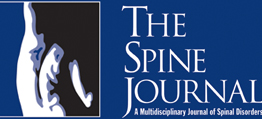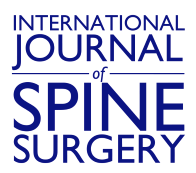
Abstract
BACKGROUND CONTEXT: Numerous studies have shown that total disc replacement (TDR) is as safe and effective as anterior Cervical disc and fusion (ACDF) for the treatment of symptomatic cervical degenerative disc disease (cDDD). While these studies have proven the effectiveness of TDR, further studies are still needed to demonstrate long-term outcomes.
PURPOSE: This study compares clinical results of one-level TDR and ACDF through seven-year follow up.
STUDY DESIGN/SETTING: A prospective, randomized (2:1), concurrently controlled FDA study involving 23 centers across the U.S.
PATIENT SAMPLE: Patients with the diagnosis of symptomatic cDDD at one level and no history of cervical spine surgery were included in this study. One hundred sixty-four patients were randomized to the TDR treatment group, and 81 patients to the ACDF treatment group.
OUTCOME MEASURES: Included outcome measures were NDI, VAS neck and arm pain, segmental range of motion, subsequent surgery rates, and adjacent segment degeneration patients to the ACDF treatment group.
METHODS: TDR patients were treated using a Mobi-C© artificial disc (LDR Spine, Austin TX, USA). Patient outcomes were collected postoperatively, at 6 weeks, 3, 6, 12 and 18 months, annually through 60 months, and at 84 months. ACDF with allograft and anterior plate was used as the control treatment. Independent radiologists conducted all radiographic evaluations (Medical Metrics, Inc., Houston, TX).
RESULTS: At 84 months, patient follow-up was 80.1% for the TDR group and 73.5% for the ACDF group. Overall success was 55.2% for TDR patients and 50% for ACDF patients at seven years (TDR was statistically noninferior to ACDF). Improvement in NDI, VAS neck pain and SF-12 scores were similar between groups at 84 months. At 84 months, mean NDI was 18±20 for TDR and 17±17 for ACDF. NDI success rate was 76.5% for the TDR patients and 80.8 % for the ACDF patients. Mean VAS neck pain was 19±27 for TDR and 20±24 for ACDF. On average, the TDR group maintained segmental range of motion at every time point through 84 months. The ACDF group demonstrated a significantly higher rate of subsequent surgeries compared to the TDR group at 84 months follow-up (TDR: 3.0% vs ACDF: 12.3%, p=.008). No significant difference was found in the rate of adverse events or major complications. Additionally, instances of adjacent segment degeneration were greater in ACDF patients at the superior (TDR:40.4% vs ACDF: 66.7%, p=.003) and inferior (TDR: 43.8% vs ACDF: 63.0%, p=.06) adjacent levels. At 84 months, 90.9% of TDR patients and 80.8 of ACDF patients were very satisfied with their respective treatment.
To Read The Full Article Click Here





